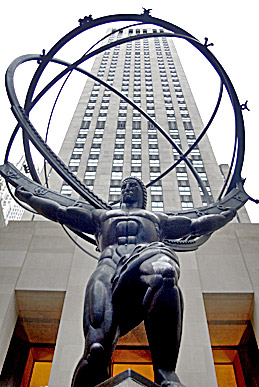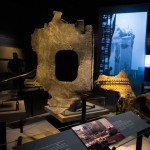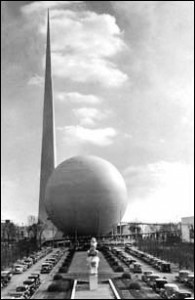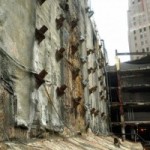In my previo us post I argued that, by awarding Peter Eisenman the Topaz Medallion for Excellence in Architectural Education, the architectural establishment tacitly recognized the need for architecture to appeal to ideas that transcend the pragmatic demands of building. This is what distinguishes architecture from other building design disciplines. Such ideas engage the social, political, historical and philosophical questions raised by the activity and products of building.
us post I argued that, by awarding Peter Eisenman the Topaz Medallion for Excellence in Architectural Education, the architectural establishment tacitly recognized the need for architecture to appeal to ideas that transcend the pragmatic demands of building. This is what distinguishes architecture from other building design disciplines. Such ideas engage the social, political, historical and philosophical questions raised by the activity and products of building.
Most architects believe this but have difficulty defending the notion that architecture represents ideas.
For business purposes, our mission is to serve the interests of our clients. For our own purposes (and for a select group of clients) we serve society at large. We are thus in the position of having to maintain a precarious balance between being a technical design discipline and a creative activity that can, under the right conditions, move people to feel and think in new ways.
Eisenman and others like him play a vital role in this balancing act. In this context, the ideas themselves are unimportant. What is important is gaining acceptance for notion that architecture embodies ideas. By whatever means (a fascinating subject in itself for another time) Eisenman has achieved this acceptance. This is true not only within the profession, but crucially among a small but influential group of critics and patrons as well. By lionizing Eisenman, the profession shares his elevation of architecture. He provides credibility for the idea that architecture represents ideals distinct from the pecuniary and performative interests of clients- a central part of the profession’s identity.
In celebrating Eisenman, the profession also proclaims its intellectual bona fides by embracing challenges to its prevailing doctrines. Furthermore, Eisenman diverts attention from the profession’s essentially economic function. He recognizes architecture’s social context only in terms of abstract historical transformations; he does not address the specifics of the interaction between architecture and a given social or cultural condition. He avoids any overt critique of economic and political bases of the existing system of building production. That would be tantamount to criticizing clients, which the profession could never embrace.
Eisenman’s radical challenge to the profession paradoxically allows architects to accept their situation and negotiate the difficult space between a noble vision of architecture and the daily realities of their work.
His ideas are safe, except insofar as they cause architects to question themselves (no small thing). They carry no real weight for practice, being manifestly unconcerned with actual work. They do, however, allow architects to see themselves as engaged in something transcendent. His ideas are like caged tigers- thrilling to contemplate yet posing no real danger.
I think that the heat with which many architects reject Eisenman and theory in general results from a profound disappointment. While they believe that architecture should embody ideas, the practical demands of maintaining a practice leave little room for intellectual exploration. They want to be reaffirmed in this belief- they want ideas that they can apply to their work. By their very nature, Eisenman’s cannot be. On the contrary, he dismisses their work to the point of saying it is not architecture at all. No wonder they’re angry. It’s sad, really. Architects are hungry for ideas, but it’s as if Eisenman is offering us cheese and we are lactose-intolerant.
 The article in today’s
The article in today’s  Modern Movement, carried to an extreme. And there were two of them, doubling down on the claim of universality. No trylon-and-perisphere dialectic here: there was only one idea to represent.
Modern Movement, carried to an extreme. And there were two of them, doubling down on the claim of universality. No trylon-and-perisphere dialectic here: there was only one idea to represent.